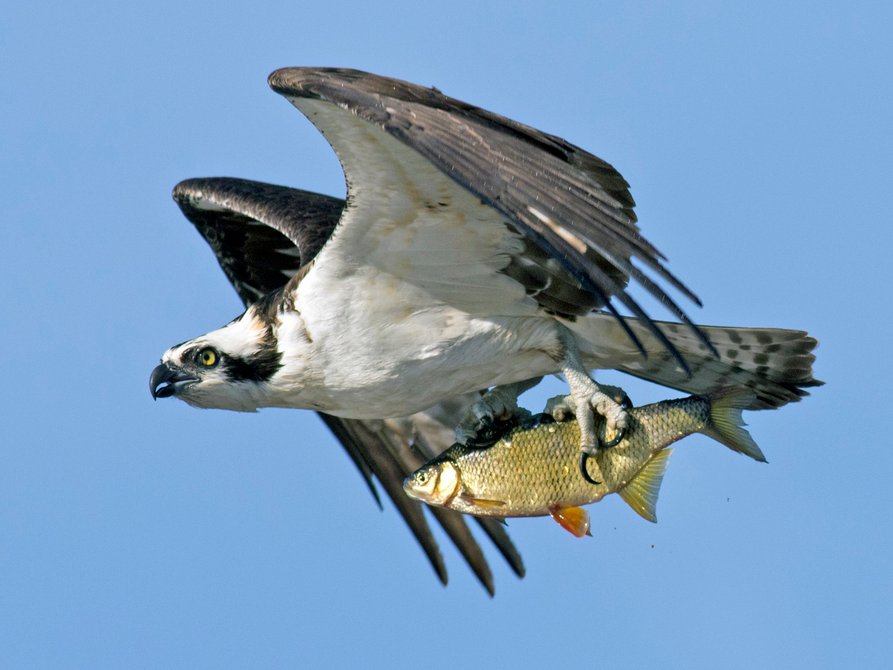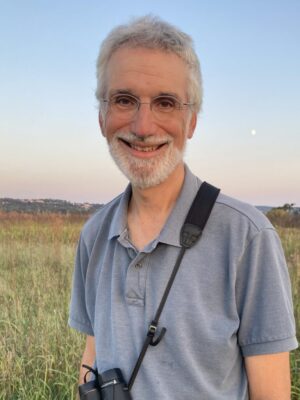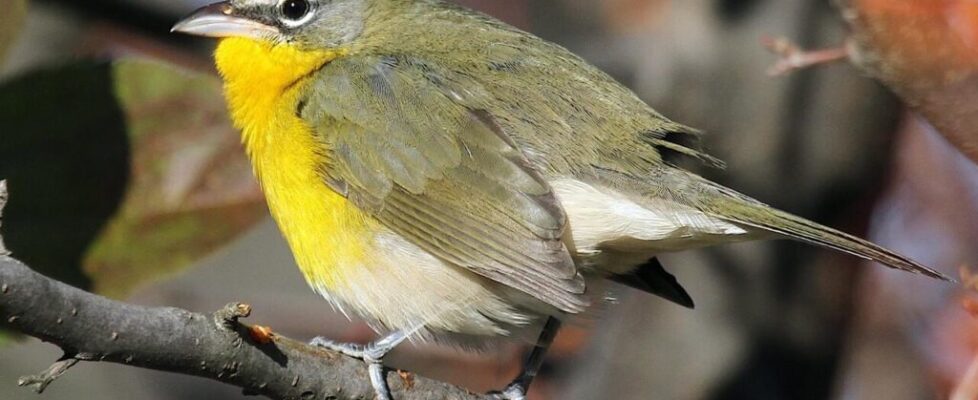Sun and Moon
I almost didn’t go to Croton Point over Labor Day weekend. I visit the park for a quiet time, to see birds, to escape—at least briefly—from the noise and clutter of real life. Those goals don’t jibe well with holiday weekends’ crowds of picnickers and ballplayers, so I usually skip my walks there until the hullaballoo is over with.

This year was different. I’d been away all week for work, and I always feel a little lost if too much time passes between visits to my favorite nearby refuge. So when I woke up on that holiday Sunday morning, I decided to brave it, getting there early to avoid the worst of the crowds.
It was the right choice. Not a stone’s throw from the main parking lot, migrating birds were foraging in the dense riverside brush and oak and maple trees beyond the gazebo. I spotted some pretty warblers—Tennessee, Cape May, Northern Parula—and then had an encounter that I won’t soon forget.
The Yellow-breasted Chat is a big, gaudy, and charismatic bird. It’s also so unusual that scientists have struggled for decades classify it. (Once considered a giant warbler, it’s currently the sole member of its own family.) Though it’s often noisy in breeding season (its “song” is an amazing series of grunts, rattles, whistles, and other sounds), it can also choose to be almost impossible to see, moving silently through dense brush.
It’s a bird that decides when you’re going to see it…and this one decided that I was. As I focused my binoculars on some shaking branches, the Chat came popping out, showing off its sunburst-yellow breast, white spectacles, and olive-green back and wings. I watched as it picked its way from bush to bush, staying in plain view. When, after a minute and half—an eternity in Chat time—it finally retreated again, I was exhilarated.
A thrill like this happens only once on a walk, even if you’re lucky. So I was surprised to feel a similar exhilaration an hour or so later, as I prepared to leave the park.
This time, though, my feelings had nothing to do with birds. While I hadn’t been paying attention, the parking lot had filled with cars and vans. People were carrying foil-wrapped trays, plastic containers, and coolers to the picnic tables and barbecue grills that dot a big riverside field.
I knew that the rest of the day there would be filled with feasts whose enticing aromas would drift across the park. Hot dogs and burgers, of course, but also food from nearly every culture I could imagine. (I get hungry just thinking about it.)
On this day, the parking lot was also a staging area for some kind of Labor Day celebration. It was filled with young people dressed in snappy yellow or red marching-band uniforms and carrying trumpets, trombones, snare drums.
I wasn’t able to stay to watch the bands perform. But I left marveling at the way this one park can fulfill so many different—and seemingly contradictory—needs. I think of it mainly as a refuge for birds, a haven of peace and quiet. On that day, though, I was vividly reminded that others see Croton Point as a place where people from all different backgrounds and cultures can gather to simply to enjoy themselves outdoors. To picnic and play ball under a big, clear sky, sun themselves on a swimming beach, or just hang out together on a beautiful day.
Thinking about this, I realized that the two groups who love the park are like the sun and moon. Every day we share the same course, yet we never quite meet. In fact, too often it seems that we’re in conflict.

But does it have to be that way? If given the chance, would the people I saw gathering on Labor Day weekend enjoy watching an Osprey dive for a fish, a majestic Bald Eagle soar past, or even a Yellow-breasted Chat lurk in the bushes? And, looking at it from the other direction, could I be more open-minded about what they’re seeking when they visit?
I thought they would. I thought I could. But I wanted to find out.
Just one day later, on Labor Day itself, I started to test my theory. I was standing in the same area where I’d spotted the Chat—no luck this time—when I saw four people approaching. I’d never seen them before and guessed (correctly, as it turned out) that this was their first time at Croton Point.
They all looked to be in their twenties, and though the man, bearing binoculars and a camera with a big lens, was clearly a birder, the three women with him didn’t seem to be. Instead, they were simply wandering around and enjoying the beauty of the place.
My first instinct, of course, was to say hi and move on. After all, I had birds to see! But this time I stuck around. First I birded with the man for a little while. Then, when the women joined us, I introduced myself and described what had been on my mind. How happy I am that the park brings people of all different kinds together, something that’s too rare in Westchester and in the world.

To be honest, I find it challenging to put myself out there with strangers. I think I talk too much and too loudly. But as I went on, I could see them all start to smile. I’ll bet they were wondering if all first-time visitors were assigned their own dedicated park ambassador, especially such a talkative one.
By the time we parted, I knew we’d made a connection. I hope our paths cross again—I’d love to take a birds-but-not-only-birds walk through the park with them someday.
And I wasn’t done being an ambassador, either. A little later, two men stopped me and asked what I was looking at. Again, my first instinct was to be as brief as possible, but again I resisted. Instead, I smiled and said, “Basically, I’m looking at little yellow and gray birds that don’t want to be seen. Exciting, huh?”
They laughed. “But, you know, I find it amazing,” I went on. “Some of them weigh less than half an ounce, yet somehow they can still fly thousands of miles to their wintering grounds every fall. And on that crazy-long journey, they choose our park to stop and rest!”
The two men looked thoughtful. “When you put it that way,” one said, “it is pretty amazing.”
The other nodded. “It’s lucky that they have this place to recharge.”
“Just like us!” said the first.
When you put it that way. As I watched them walk down the path, I heard those words echoing in my head. And I thought: That’s how I can help the sun and the moon meet—by “putting it that way.” By being open and enthusiastic about the things I care about, and equally open to enthusiasms I may not share.
My encounters that day left me wanting to do more. Perhaps some weekend I can offer a free bird walk to the people who’ve gathered for picnics. There’s always something beautiful to see at Croton Point Park, always something unexpected to learn, and I’ll bet we’ll connect just as I did with the others.
In the meantime, I’m going to keep on reaching out. So if you happen to run across a tall, gray-bearded, cheerful guy at Croton Point Park…well, please feel free to ask me what I’m looking at, or to tell me what you’re doing there.
And then let’s chat.
Copyright © 2024 by Joseph Wallace



